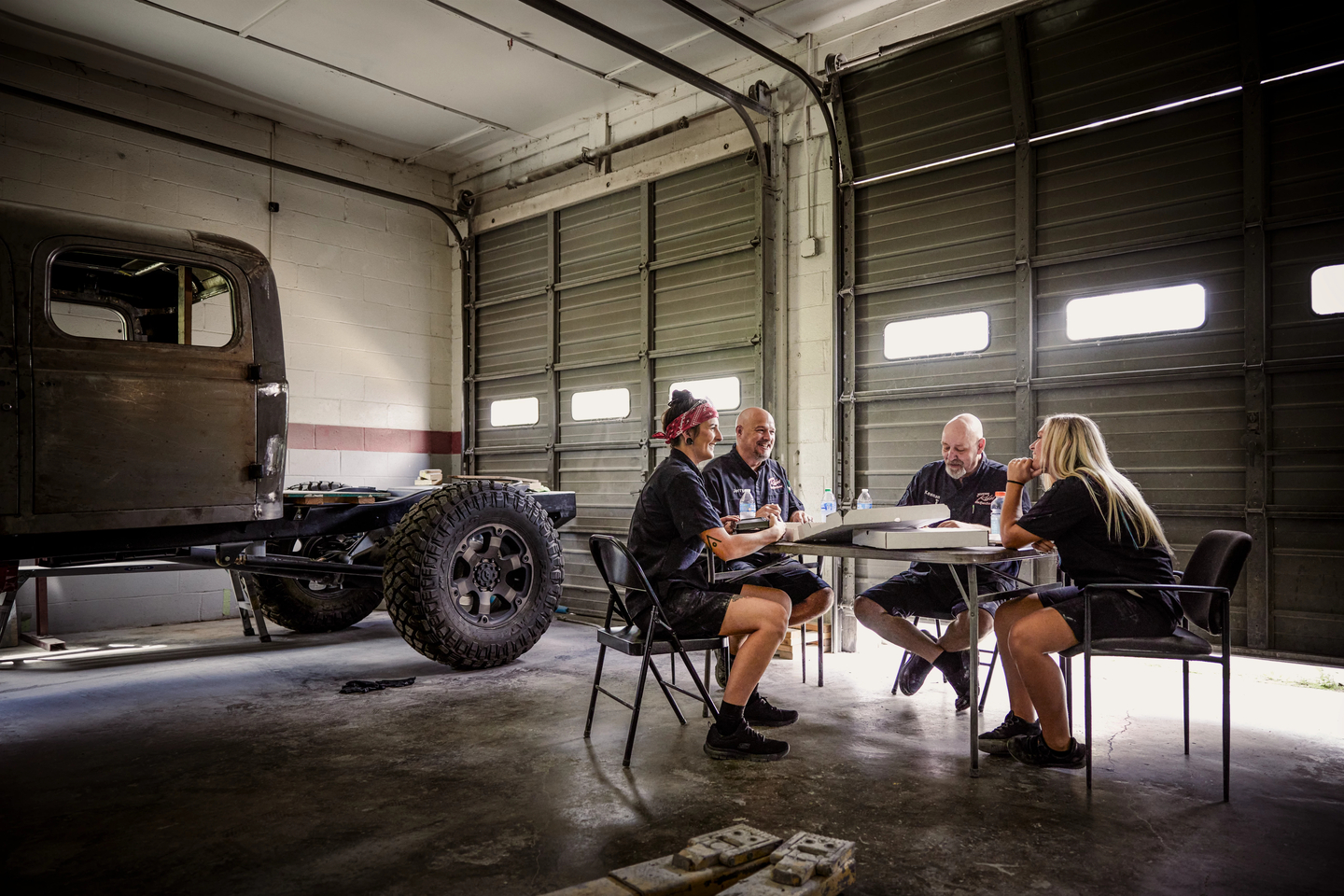
The Importance of Temperature Regulation
INTRODUCTION
Temperature regulation in uniforms plays a pivotal role in ensuring the well-being and performance of workers across various industries.
Workers like delivery drivers, construction workers, kitchen staff, and manufacturers in high-heat facilities all need uniforms capable of regulating body temperature.
This white paper explores the impact that these innovative uniform features have on employee safety, comfort, and productivity.
OCCUPATIONAL HEAT STRESS
Occupational heat stress poses significant challenges to workers across the United States. The Bureau of Labor Statistics (BLS) reports that environmental heat causes an average of 35 workplace fatalities per year and an average of 2,700 cases with days away from work.
Between 2011 and 2019, the Bureau of Labor Statistics reported 344 worker deaths due to heat exposure, with 57 of them aged 55 to 64. Over 30,000 workers also suffered heat-related illnesses or injuries during that period. However, safety experts caution that these figures may not capture the full extent of the problem. Juley Fulcher, a worker health and safety advocate, notes that the data relies on self-reporting from employers, which can be unreliable, as less than half maintain the necessary records. Additionally, some workers may fear retaliation and choose not to report heat-related illnesses.
Heat stress occurs when the body's ability to regulate its internal temperature is overwhelmed by environmental conditions, which leads to elevated body temperatures and the potential for heat-related illnesses.
Overexposure to heat can cause:
● Fatigue
● Heat rash
● Muscle cramps
● Heat exhaustion
● Heat stroke
Although the Occupational Safety and Health Administration does not specifically regulate work-related heat stress, in 2023 it announced the developing stages of a proposed rule with new regulations and safety requirements. The new rule would require employers to take specific actions in protecting workers from heat-related illnesses.
Some states, including California, recognize the seriousness of occupational heat stress and have already implemented their own state-specific requirements.
OCCUPATIONAL HEAT STRESS: OVERVIEW
Here's an overview of how occupational heat stress affects workers in different industries:
Outdoor Workers
As you might expect, outdoor workers, such as those in the construction, landscaping, and agricultural industries, are particularly vulnerable to heat stress. Prolonged exposure and heavy physical exertion increase the risk of dehydration and heat-related injuries. This is especially true during hot summer months. According to the NOAA National Climatic Data Center in the U.S., the average summer temperature was 71.9 degrees Fahrenheit in 2023. In that same year, we saw scorching temperatures across the U.S. with a record-high temperature of 127.7 degrees Fahrenheit being recorded in California.
Delivery and Transportation Workers
Delivery drivers, truckers, and transportation workers spend extended amounts of time exposed to the sun and heat inside vehicles or loading docks. Poor ventilation and insulation in vehicles, as well as some of these vehicles lacking air-conditioning altogether, can exacerbate heat buildup leading to discomfort and increased risk of heat-related illnesses.
In addition, the physical demands of the job, such as loading and unloading heavy materials in potentially high-temperature conditions, puts them at an even higher risk.
Heat stress is a hot topic in the transportation industry. In June of 2023, UPS announced that it had reached a new agreement with the Teamsters Union on heat safety measures for its employees. The Teamsters Union represents over 330,000 UPS drivers across the country.
Kitchen and Food Staff
Kitchen environments can expose workers to extremely high temperatures generated from cooking equipment, ovens, and stoves.
Heat stress is a common concern among chefs, cooks, and food service workers due to prolonged exposure to hot surfaces, intense heat sources, and many culinary uniforms are not built with comfort or airflow in mind.
In August of 2023, the Restaurant Opportunities Centers United (ROC) released a national “Beat the Heat" report, which details the harms of extreme indoor heat in the restaurant industry. According to the report, over 70% of all respondents who were surveyed indicated a desire for federal guidelines that mandate all restaurants implement a heat prevention plan.
Industrial and Manufacturing Workers
Other indoor work environments that can expose workers to hazardous heat include places like steel mills, foundries, mining facilities, and other manufacturing environments.
Industrial settings often involve exposure to heat-generating machinery, furnaces, and manufacturing processes. Workers in these industries face elevated temperatures and humidity levels, increasing the risk of heat stress and dehydration.
KEY FEATURES IN WORK UNIFORMS
Temperature regulation is an important feature for uniform manufacturers to include in their products because it helps maintain body temperature and can reduce the risk of occupational heat stress.
Fabric Materials
High-performance materials such as moisture-wicking polyester blends and breathable mesh fabrics facilitate the efficient transfer of sweat away from the body, keeping workers dry and comfortable.
LIGHTWEIGHT FABRICS
Comfortable, lightweight fabrics allow space between your skin and the fabric for air and moisture to move.
UNIFORM DESIGN
Strategic placement of mesh panels, breathable gussets, and ventilation zones optimizes airflow, allowing heat to escape and cool air to circulate. Uniform construction that prioritizes lightweight fabrics prevents overheating without compromising durability or functionality.
EXAMPLE OF A WORKPLACE UNIFORM WITH TEMPERATURE REGULATION
Moisture-wicking fabric
This innovative feature helps to keep the wearer cool and dry by wicking away sweat and moisture from the skin, which can help to prevent discomfort and irritation.
Ventilated mesh panels
These panels are strategically placed to allow for airflow and ventilation, which can help to regulate body temperature and keep the wearer cool.
UV Protection
This shirt is designed with UV protection, which can help to protect the wearer from the sun's harmful rays, making it a great choice for outdoor work.
ADDITIONAL BENEFITS OF TEMPERATURE REGULATION
In addition to safety, temperature-regulating uniforms can also help workers feel more comfortable throughout the day. This leads to improved morale, enhanced productivity, and overall job satisfaction.
Improved Comfort
Employees who feel comfortable are more likely to maintain a positive mood and attitude towards their work. Workers are also less likely to experience stress or distractions when they are comfortable in their clothing.
Temperature-regulating uniforms can help workers stay cool all day long while still maintaining a professional appearance. For example, uniforms with moisture-wicking properties and ventilation panels can help reduce sweating and keep employees dry and odor-free.
Enhanced Productivity
Maintaining an optimal body temperature can help workers focus on the task at hand and perform their best. Conversely, workers who are subjected to too much heat may experience decreased concentration, impaired decision-making, and reduced mental clarity.
Workers equipped with temperature-regulating uniforms are able to endure prolonged periods of work without succumbing to the negative effects of heat stress. By stabilizing body temperature and promoting comfort, these uniforms enable workers to maintain their focus and improve their performance and productivity.
By investing in uniforms that feature innovative fabric technologies and temperature regulation, businesses can prioritize the well-being of their employees and create safer, more comfortable work environments that lead to greater productivity and success.
CONCLUSION:
As leading experts in the workwear industry, we understand the important role that uniforms play in the day-to-day lives of our customers. Here at Red Kap, we make purpose-built uniforms based on the unique needs of your business. We offer a wide range of innovations such as MIMIX®, Coolcore®, and SafeCinch® to help enhance the user’s experience.
Make the decision to prioritize temperature regulation and high-quality uniforms by partnering with us. We will utilize our full portfolio of products to develop a uniform program that works for you.
